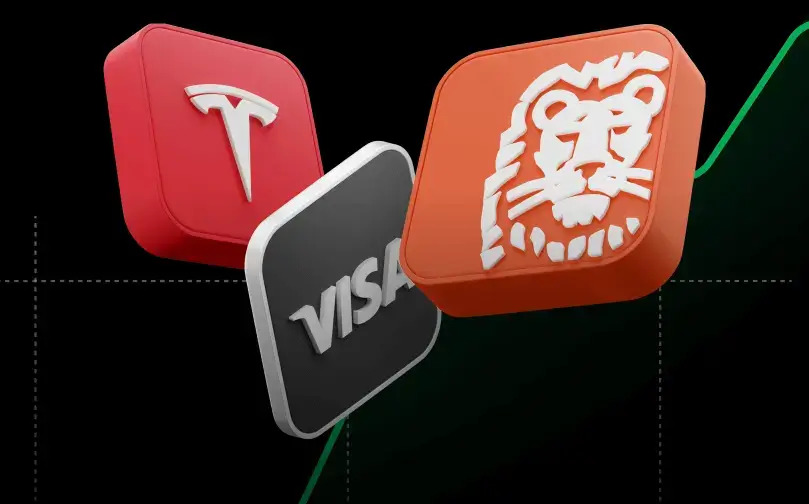- Procter & Gamble (PG) to report earnings next week
- Stock is down 5.6% year-to-date
- PG is entering period of seasonal margin rebound
- Revenue growth seen accelerating from fiscal-Q4 2023 (calendar Q2 2023)
- PG tends to beat earnings and sales expectations
- A look at valuation
- Stock trades near the lower limit of bullish channel
Shares of Procter & Gamble (PG.US) are trading over 5% year-to-date lower after swinging to YTD loss over the past month. Company is set to report fiscal-Q1 2024 earnings (calendar Q3 2023) as soon as next week. Given that PG has a solid track record of beating market expectations it could be a chance to turn short-term sentiment on the stock. Let's take a quick look at expectations ahead of next week's release as well as PG's valuation!
Procter & Gamble reports earnings next week!
Procter & Gamble (PG.US) is set to report its fiscal-Q1 2024 earnings (calendar Q3 2023) next Wednesday before the opening of the Wall Street session. Company is expected to report acceleration in revenue growth as well as the highest adjusted EPS since fiscal-Q2 2022 (calendar Q4 2021). Company has done a good job in navigating a high inflation environment that has negatively impacted consumer spending. However, as the inflation peak is likely to have passed already, the company could issue an upbeat guidance for the fiscal-2024.
Fiscal-Q1 2024 earnings expectations
- Adjusted EPS: $1.72 (+9.5% YoY)
- Revenue: $21.62 billion (+4.8% YoY)
- Gross Margin: 49.26% vs 47.40% a year ago
- Operating Profit: $5.34 billion (+8.1% YoY)
- EBITDA: $5.99 billion (+6.9% YoY)
- Adjusted Net Income: $4.23 billion (+7.4% YoY)
Procter & Gamble has a solid record of beating market estimates over the past 10 years (40 quarters). Company managed to beat adjusted EPS expectations 34 out of 40 times while revenue expectations were beat 26 out of 40 times during the period. Company has beat adjusted EPS expectations by an average of 3.7% during the past 40 quarters while revenue expectations were beat by an average of 0.7% during the period.
 Procter & Gamble has seen some revenue growth reacceleration in fiscal-Q4 2023 and is expected to extend this streak into fiscal-Q1 2024 as well. Source: Bloomberg Finance LP, XTB Research
Procter & Gamble has seen some revenue growth reacceleration in fiscal-Q4 2023 and is expected to extend this streak into fiscal-Q1 2024 as well. Source: Bloomberg Finance LP, XTB Research
 Fiscal-Q4 is seasonally the weakest quarter in terms of PG's margins. Source: Bloomberg Finance LP, XTB Research
Fiscal-Q4 is seasonally the weakest quarter in terms of PG's margins. Source: Bloomberg Finance LP, XTB Research
Valuation
Let's take a quick look at Procter & Gamble''s valuation with 3 often used valuation methods - DCF, multiples and Gordon Growth Model. We want to stress that those valuations are for presentation purposes only and should not be viewed as recommendations or target prices.
Discounted Cash Flow method
Let's begin our look at valuation with a widely used fundamental model - Discounted Cash Flow method (DCF). We have taken a simplified approach to DCF valuation and used average values for the past 5-years as assumptions for 10 years of forecasts. Terminal value was calculated using 3% as terminal revenue growth forecast and 5-year average WACC of 7.1% as terminal WACC. Such assumptions provide us with a DCF valuation of $152.71 per share of Procter & Gamble's stock - or around 6-7% above current market price.
However, as is usually the case with valuation models, DCF model is highly sensitive to assumptions made. Two sensitivity matrices are provided below - one for different sets of Operating Margin and Revenue Growth assumptions and the other for different sets of Terminal WACC and Terminal Revenue Growth assumptions. As one can see, a 100 basis point cut to operating margin or revenue growth assumption would lead to a below-market valuation. Increasing terminal WACC assumption by 50 basis points or lowering terminal revenue growth assumption by 50 basis points would also be enough to print a below-market valuation for Procter & Gamble.
Source: XTB Research
Source: XTB Research
Multiples
Next, let's take a look at multiples of Procter & Gamble and its peers. Peer group has been constructed with both US and non-US companies engaged in the beauty products business and includes: Unilever, L'Oreal, Kimberly Clark, Estee Lauder, Colgate-Palmolive, Beiersdorf and Coty. We have taken a look at 6 different valuation multiples - P/E, P/BV, P/S, P/FCF, EV/Sales and EV/EBITDA.
As one can see in the table below, there is a big volatility in those multiples with ranges being very wide. For instance, P/E multiples range from 13.98 for Unilever to as high as 155.86 for Coty. In case of P/E, Coty is a clear outlier within the group just as Colgate-Palmolive is in case of P/BV multiple. In order to account for this outlier distorting means, we have decided to calculate Procter & Gamble's valuation with use of multiple medians. Calculations made with median provide us with valuations as low as $86.60 (EV/Sales) and as high as $195.38 (P/E). A trimmed mean valuation, that excludes the highest and the lowest readings, provides us with an intrinsic value of $134.96 per share of Procter & Gamble's stock - or around 5-6% below current market price.
Source: XTB Research
Gordon Growth Model
Finally, let's take a look at Gordon Growth Model - a valuation method utilizing dividends. Procter & Gamble has been paying out dividends for over 130 years now and delivered consecutive dividend increases for the past 67 years. Using 5-year average dividend growth of 5.7% and 5-year average cost of equity of 7.7% as dividend growth and required rate of return assumptions in the model, provides us with a stock valuation of $194.52 per share - or over 35% above current market price.
Unlike in case of DCF or multiples, Gordon Growth Model suggests that intrinsic value of Procter & Gamble shares differs significantly from the current market price. Even though the model is sensitive to the assumption made, it would take a 40 basis point increase in required rate of return assumption as well as 40 basis point decrease in dividend growth assumption to push the intrinsic value below current market price.
Source: XTB Research
A look at the chart
Procter & Gamble (PG.US) is trading over 5% year-to-date lower. However, stock was trading year-to-date higher as recently as a month ago but has since taken a hit amid broader sell-off in consumer goods stocks. Taking a look at Procter & Gamble (PG.US) chart at D1 interval, we can see that the stock has been trading in a bullish channel since mid-2022. A recent sell-off has pushed the stock towards the lower limit of the channel and support zone ranging below the $143.00 mark was tested. As this zone coincides with the lower limit of the channel, a bounce off this area would be a strong bullish signal and may herald a recovery with the upper limit as the target.
 Source: xStation5
Source: xStation5
DE40: Decline of sentiment in Europe
Atlassian beats revenue and earnings forecasts in Q1 2026
Economic calendar: Macroeconomics and Fed Officials’ Speeches in Focus (31.10.2025)
Morning wrap (31.10.2025)


